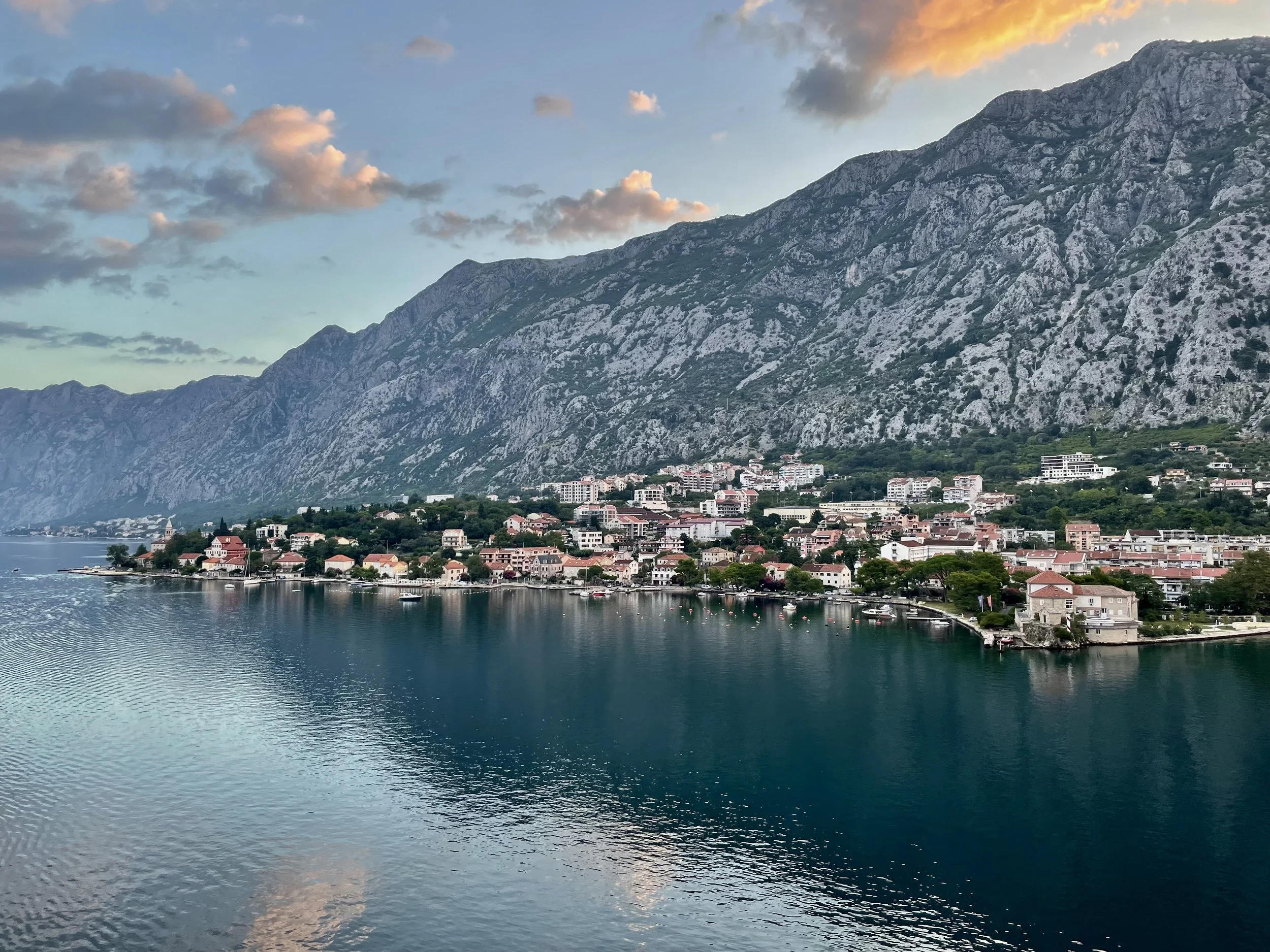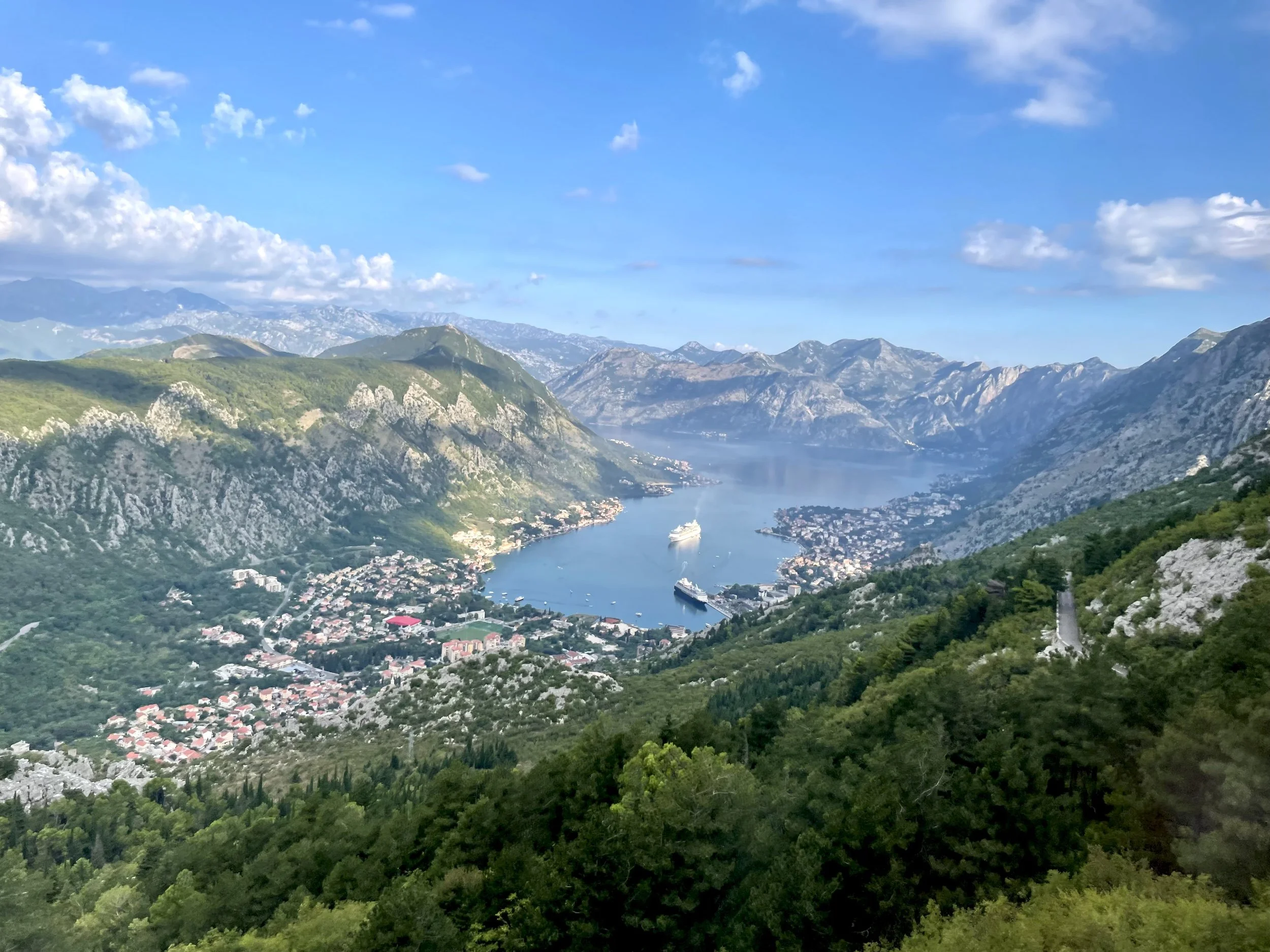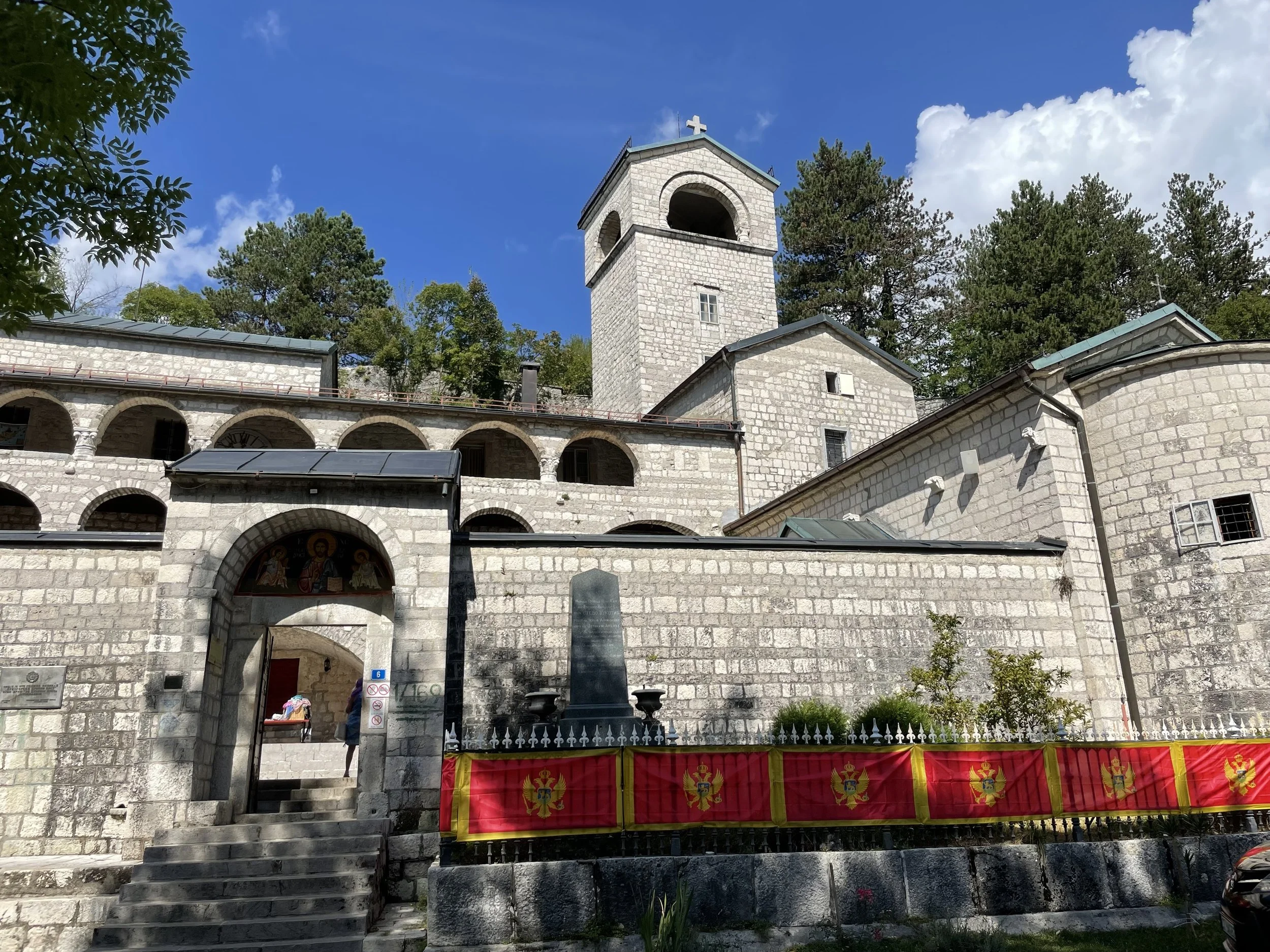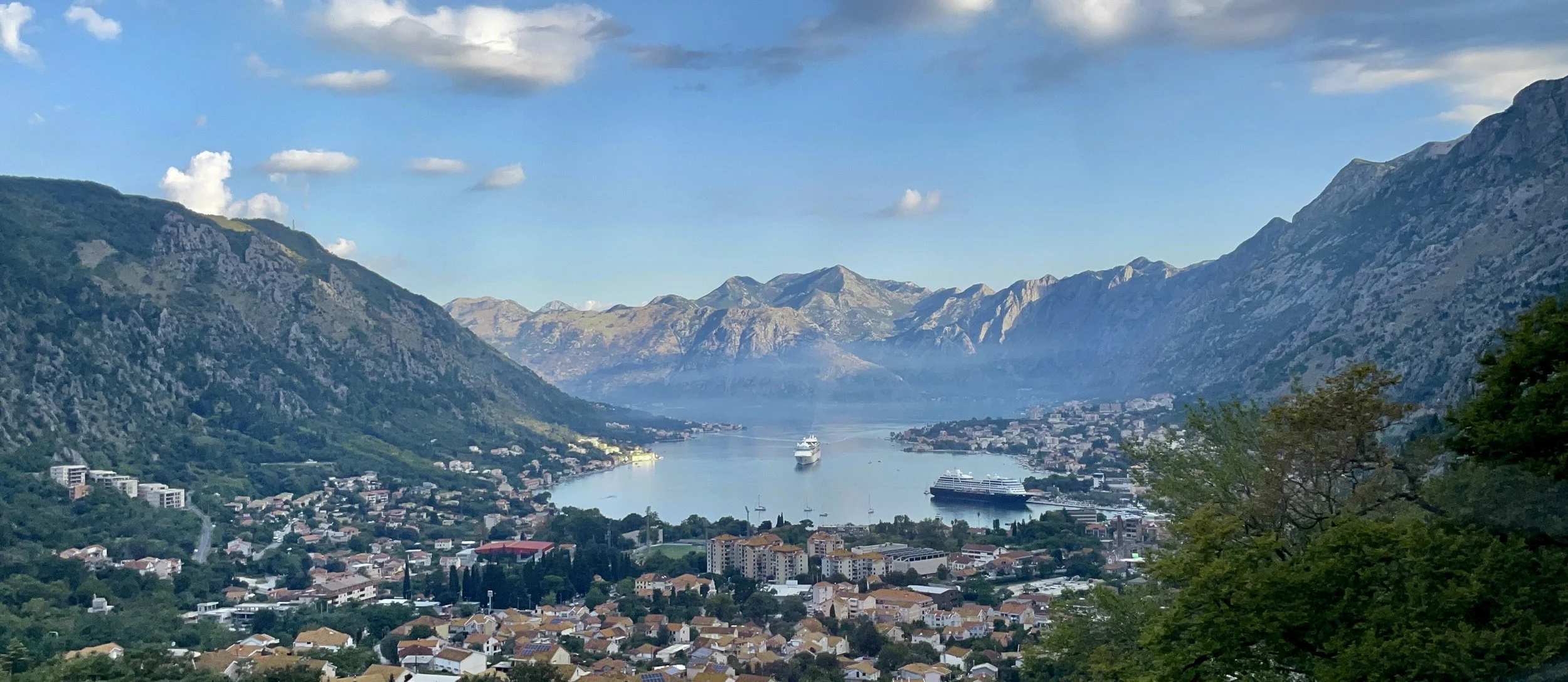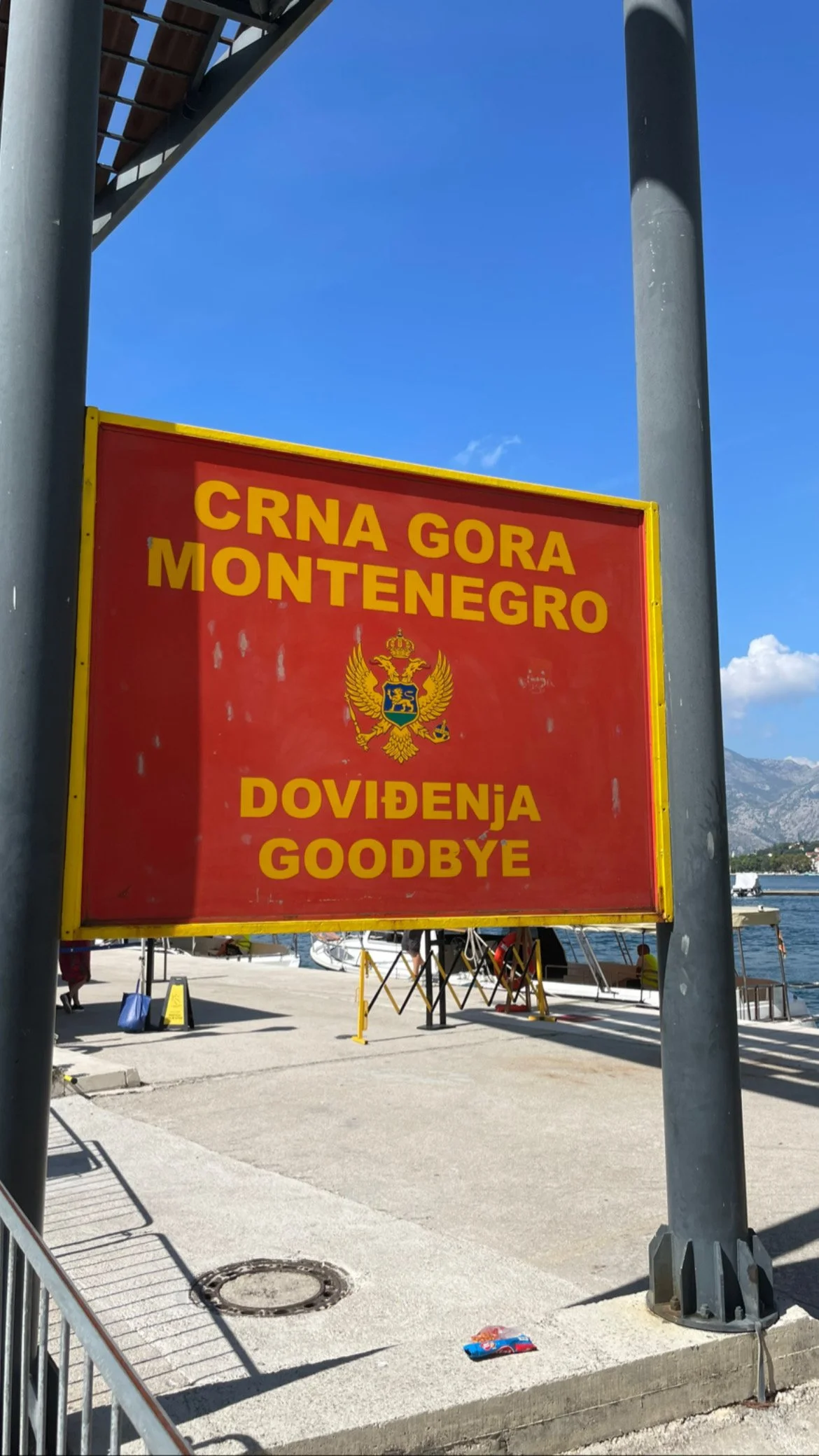Kotor, Montenegro: An Unexpected Delight
The Bay of Kotor is one of the most beautiful ports I have ever sailed into. We pulled in before dawn, and I went up on deck expecting to watch the sunrise. What I got instead was a scene that made me put the camera down and pause to take it all in. The mountains rose like stone walls around the bay, their reflections stretching across the water. Villages with red-tiled roofs clung to the shoreline, the kind of places that look like they were plucked straight out of a fairytale (because honestly, this is the kind of place that would inspire such stories). The air was cool, wisps of clouds hung over the peaks, and the whole scene was dramatic in the best way. It reminded me why I like arriving by sea.
We anchored in the bay and tender boats carried us ashore where a bus was waiting to transport us straight into the mountains. The road we climbed is known for its 25 serpentine turns, each one a hairpin bend that makes you wonder how buses manage to pass. Every switchback gave us a new angle on the bay. From the top you can see out across Montenegro and into neighboring Croatia and Bosnia and Herzegovina, the kind of view that stretches further than you’d expect from such a small country. The ride was worth every twist and turn.
From there we crossed the ridge to Njeguši, a small mountain village known for cheese and for Njeguški pršut, the Montenegrin version of prosciutto. We stopped at a family-run restaurant where wooden beams overhead were stacked with drying meats. The smell of oak smoke hung in the air while plates of cheese and thin slices of pršut were passed around, along with a glass of rakija, the local brandy that goes down with more fire than finesse. Simple food, but in that setting it felt like a feast. Afterward we stepped into the drying house itself, rows of hams hanging from the ceiling in different stages of aging. It was a glimpse into a tradition that hasn’t changed much in centuries.
Our journey continued to Cetinje, the old royal capital of Montenegro. It’s a modest town now, quiet and unhurried, but it once held the country’s political heart. I toured King Nikola’s Palace (we were not allowed to take photos inside), which was filled with portraits, uniforms, royal furniture, and gifts from dignitaries who once recognized Montenegro’s place on the European stage. Walking through the rooms gave a sense of how the royal family lived, and afterward I wandered the streets outside, past the old embassies and pastel-colored buildings that still give the town a stately air even if its glory days have passed.
By afternoon we were back in Kotor. The walled city stood right at the edge of the harbor, its stone towers and battlements framing the entrance to the Old Town. I didn’t go inside, but from the waterfront I could see people enjoying the afternoon in every direction. Restaurants and cafés along the shore were full, with tables shaded by umbrellas. Small boats cut across the bay while others floated quietly at anchor. Some people were swimming, others stretched out on the rocks or piers, and the whole scene felt laid-back, like the town itself was exhaling at the end of the day.
Kotor caught me off guard. I expected a pretty stop on an Adriatic cruise, but what I found was more vivid: a bay so still it felt unreal, a mountain road that twisted into the sky, smoky pršut in a tiny village, a royal palace that whispered of Montenegro’s past, and a town that knows how to enjoy the simple pleasure of an afternoon by the water. Montenegro may not take up much space on the map, but a day here made the world feel bigger.
Practical Tips for Independent Travelers
• Getting There: Kotor is about two hours from Dubrovnik, Croatia, and an hour and a half from Montenegro’s capital, Podgorica. Buses run regularly and cost around €10–15 one way.
• The Serpentine Road: A taxi up to the 25 turns viewpoint is roughly €40–50 round trip, though minivan tours cost about €25 per person. If you prefer to hike, the Ladder of Kotor trail climbs from the Old Town up toward the same ridge, though it is steep and can take 2–3 hours.
• Njeguši Stop: In local taverns, a platter of pršut, cheese, and bread costs about €10–12. Rakija shots are typically €2–3. Most places are cash only.
• Cetinje: Entry to King Nikola’s Palace Museum is €3. You’ll need about an hour for the museum, plus another hour to stroll the center of town.
• Back in Kotor: Entry to the Cathedral of Saint Tryphon costs €4, and if you do want to climb the fortress above the town it’s €8. Café prices in the Old Town are reasonable: about €2 for coffee, €4–5 for a glass of local wine, and €10–15 for a meal.
• Timing: If you’re not visiting on a cruise, mornings and evenings are best. Midday can be crowded when multiple ships are in port.

